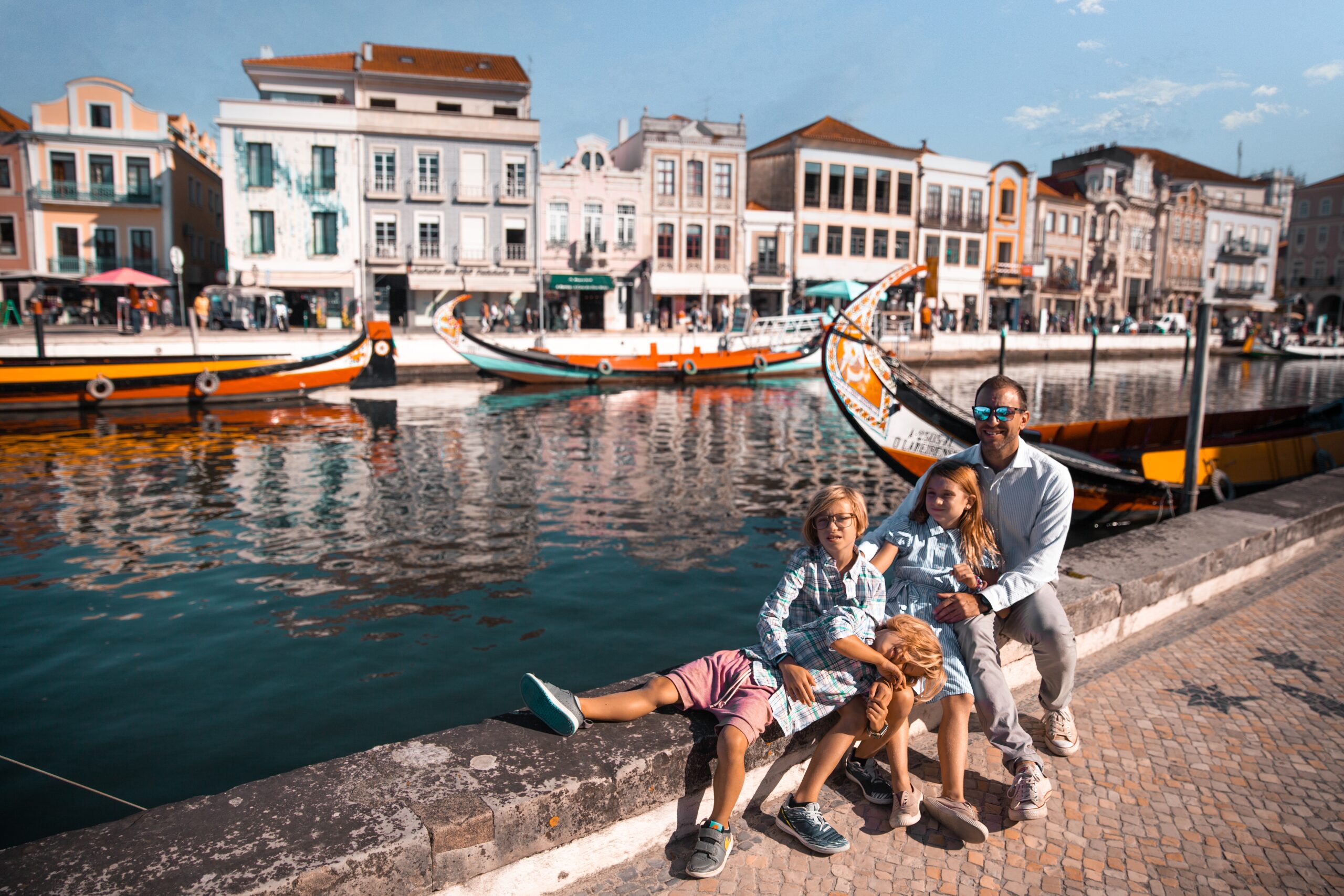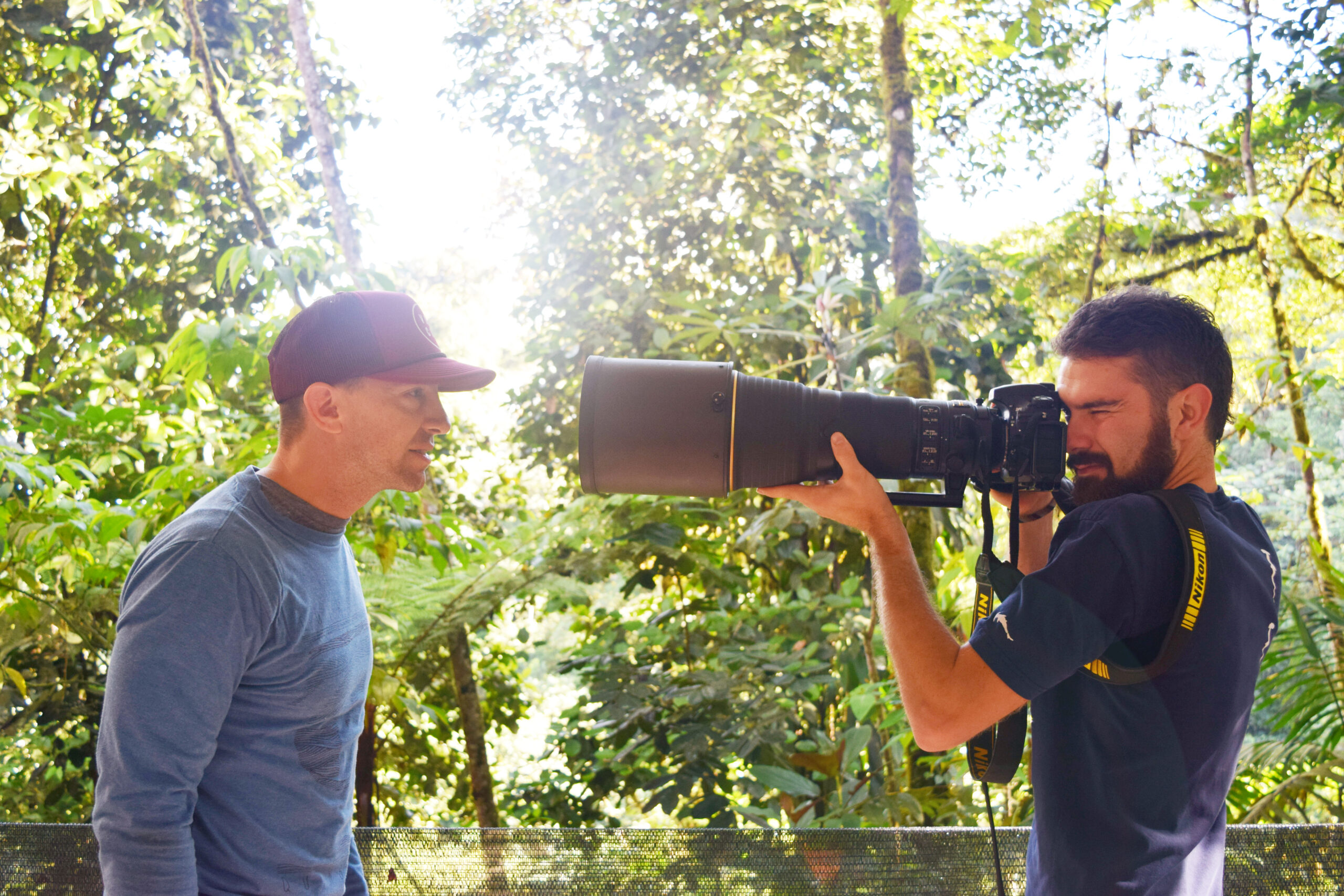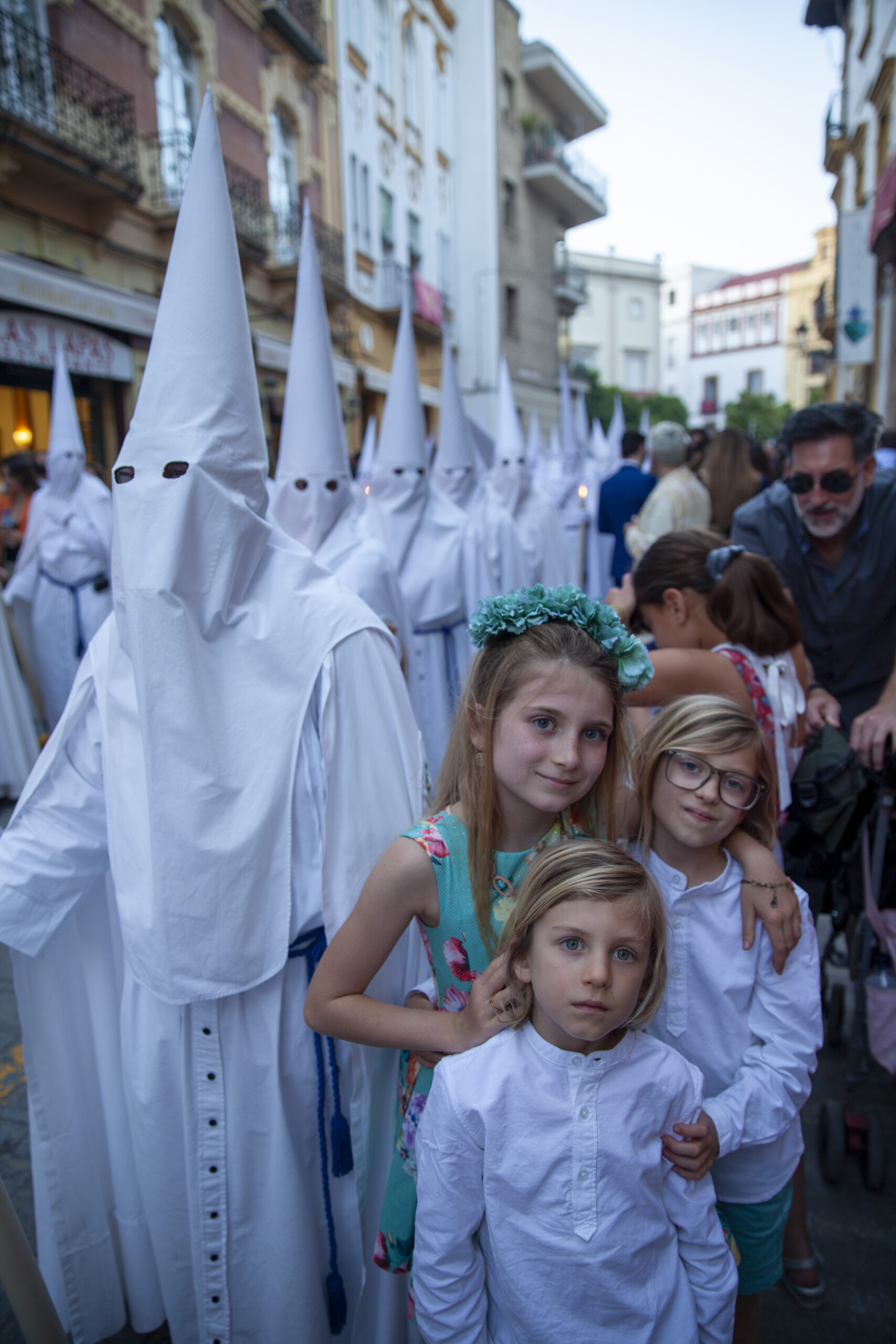Why Spain is a great place for kids
Choosing the city that's right for you
Choosing the visa that's right for you
More than just great weather
Why Spain provides a better quality of life

How we Plan

What we pack
Choosing Travel Insurance
Book Your Hotel
with Booking.com
Book Your Car
with RentalCars.com
Book Your Flight
with Skyscanner.com
Book Your Tour
with GetYourGuide.com

Our Camera Gear

How We Fly
Choosing Your Destination
Semana Santa in Sevilla: A Short Guide to the Week-Long Festival
Semana Santa in Sevilla, Spain, is a spectacle like no other. Imagine a city buzzing with anticipation, streets adorned with intricate decorations, and the air filled with solemn processions, all culminating in an extravagant celebration of faith and tradition. But before you dive headfirst into this cultural extravaganza, let’s break down everything you need to know (and probably some things you don’t) about Semana Santa in Sevilla.
What is Semana Santa?
Semana Santa, or Holy Week, is a deeply ingrained tradition in Sevilla, dating back centuries. It commemorates the Passion of Christ through a series of processions organized by religious brotherhoods, known as cofradías. These processions feature elaborately decorated floats, or pasos, depicting scenes from the Bible, accompanied by hauntingly beautiful music and the solemn chants of saetas.
The Pasos and Procession
The heart of Semana Santa lies in its pasos, which are carried through the streets of Sevilla by costaleros, not castelleros (thanks for the correction). These costaleros, often hidden beneath the weight of the paso, navigate narrow streets and uneven cobblestones with remarkable precision, a feat worthy of admiration. Each paso represents a different scene from the Passion of Christ, ranging from his triumphant entry into Jerusalem to his crucifixion and resurrection.
The processions begin in the early hours of the morning and continue well into the night, with each cofradía following a meticulously planned route through Sevilla’s labyrinthine streets. As the pasos make their way through the city, crowds gather to witness this awe-inspiring display of faith and devotion, jostling for the best vantage points along the route. It’s a sight to behold, with the flickering candlelight casting an ethereal glow on the solemn faces of the procession participants.
Here’s a list of some traditional pasos from Semana Santa in Sevilla:
Pasos de Cristo (Christ’s Floats):
- Paso de la Borriquita (The Entry into Jerusalem): Created in the 16th century, from the Parish of Omnium Sanctorum, parades through the neighborhood of Triana.
- Paso del Gran Poder (The Great Power): Dating back to the 17th century, from the Basilica of Jesus del Gran Poder, it processes through the streets of the center of Sevilla.
Pasos de la Virgen (Virgin’s Floats):
- Paso de la Esperanza Macarena (The Hope of Macarena): Originating from the Basilica of La Macarena, it travels through the Macarena district. Created in the 17th century.
- Paso de la Virgen de los Dolores (The Virgin of Sorrows): Created in 18th century, from the Church of San Lorenzo, it parades through the San Lorenzo neighborhood.
- The Paso de El Silencio, also known as the Virgen de la Soledad (Virgin of Solitude), is a deeply evocative and solemn procession that takes place during Semana Santa in Sevilla. This paso is renowned for its silent and contemplative atmosphere, reflecting the grief and mourning associated with the Passion of Christ.
Pasos de Palio (Canopy Floats):
- Paso de la Virgen de la Esperanza (The Virgin of Hope): From the Church of la Esperanza de Triana, it processes through the neighborhood of Triana. Created in the 17th century.
- Paso de la Virgen del Rocío (The Virgin of the Dew): Originating from the Hermandad Matriz de Almonte, it parades through the city center.
Pasos de Misterio (Mystery Floats):
- Paso del Cautivo (The Captive): Created in the 19th century, from the Parish of San Esteban, it processes through the Alfalfa neighborhood.
- Paso de las Tres Caídas (The Three Falls): Originating from the Church of San Isidoro, it travels through the Triana neighborhood. Created in the 18th century.
The Saetas
Ah, the saetas – those hauntingly beautiful songs that pierce the night air like a dagger through the heart. Sung spontaneously by impassioned locals, these improvised verses pay homage to the Virgin Mary and evoke a sense of raw emotion that is truly spine-tingling. Whether you’re a devout Catholic or a skeptical tourist, the saetas are sure to leave a lasting impression.
History of Semana Santa
The origins of Semana Santa can be traced back to medieval Spain, where it served as a means of reaffirming faith and fostering community cohesion in the face of adversity. Over the centuries, it has evolved into the elaborate spectacle we see today, drawing thousands of visitors from around the world to witness its splendor firsthand.
The Wax Balls
During Semana Santa in Sevilla, it’s a common tradition for children to participate in making “bolas de cera,” or balls of wax. These wax balls are a cherished part of the festivities and hold symbolic significance within the context of the religious processions.
The process of making bolas de cera typically begins in the days leading up to Semana Santa. Children gather together with their families or within their communities to craft these unique wax creations. They start by melting colored wax and shaping it into small balls using their hands or molds. Some children add decorative elements such as glitter, sequins, or small figurines to personalize their wax balls.
The significance of bolas de cera lies in their use during the processions. As the religious floats pass by, children eagerly await the opportunity to throw their wax balls at the paso as it makes its way through the streets. This act symbolizes an offering of devotion and reverence to the religious figures depicted on the floats.
While the practice of throwing wax balls may seem unusual, it holds deep cultural significance in Sevilla during Semana Santa. It is a way for children to actively participate in the religious rituals of the season and to express their faith in a tangible and meaningful manner.
For the children involved, making and throwing bolas de cera is a cherished tradition that adds an element of excitement and joy to the solemn processions of Semana Santa. It is a unique aspect of the cultural heritage of Sevilla and highlights the intergenerational nature of the festivities, as families come together to celebrate their faith and traditions.
Hotels
Top 5 Hotels in Sevilla for Semana Santa:
Hotel Alfonso XIII: This iconic hotel exudes luxury and grandeur, offering impeccable service and opulent accommodations. Located in the heart of Sevilla, it provides easy access to Semana Santa processions and other attractions.
EME Catedral Hotel: Nestled in the historic district of Santa Cruz, this boutique hotel boasts stylish rooms, a rooftop pool with stunning views of the cathedral, and a prime location for Semana Santa festivities.
Hotel Casa 1800 Sevilla: Situated near the Giralda Tower, this charming hotel captures the essence of old-world Sevilla with its elegant décor and personalized service. Guests can unwind in the tranquil courtyard or enjoy panoramic views from the rooftop terrace.
Hotel Mercer Sevilla: Housed in a beautifully restored 19th-century palace, this boutique hotel offers a blend of modern amenities and historic charm. With its central location and luxurious accommodations, it’s an ideal choice for Semana Santa travelers.
Hotel Palacio de Villapanés: Escape the hustle and bustle of the city at this serene oasis, featuring spacious rooms, a tranquil courtyard garden, and a relaxing spa. Located in the historic center, it provides a peaceful retreat after a day of Semana Santa festivities.
Restaurants
Top 5 Restaurants in Sevilla for Semana Santa:
El Rinconcillo: Established in 1670, this historic tavern serves traditional Andalusian cuisine in a charming atmosphere. Sample tapas like jamón ibérico and grilled prawns, paired with a glass of fino sherry or local wine.
Abantal: For a fine dining experience, head to Abantal, where innovative dishes showcase the best of Andalusian gastronomy. Chef Julio Fernandez combines traditional flavors with modern techniques, resulting in culinary masterpieces that delight the senses.
Eslava: This popular tapas bar is known for its creative small plates and lively ambiance. Don’t miss classics like carrillada (braised pork cheeks) and salmorejo (chilled tomato soup), along with seasonal specialties that highlight the region’s culinary heritage.
La Azotea: With several locations across Sevilla, La Azotea offers panoramic views and inventive cuisine inspired by local ingredients. From fresh seafood to inventive desserts, each dish is a culinary journey through the flavors of Andalusia.
Casa Robles: Located in the picturesque neighborhood of Triana, Casa Robles is famous for its traditional flamenco shows and authentic Andalusian cuisine. Enjoy hearty dishes like rabo de toro (bull’s tail stew) and pescaíto frito (fried fish), accompanied by live music and dancing.
Conclusion
If you’re planning to experience Semana Santa in Sevilla, be prepared for large crowds, limited accommodation, and exorbitant prices. It’s advisable to book your accommodation well in advance and familiarize yourself with the procession routes to avoid getting caught in the crush.
Semana Santa in Sevilla is a once-in-a-lifetime experience that defies description. From the solemn processions to the hauntingly beautiful saetas, it’s a celebration of faith, tradition, and community spirit that will leave you breathless and wanting more. So, if you’re ready to immerse yourself in the rich cultural tapestry of Spain, pack your bags and prepare for an unforgettable journey through the heart of Andalusia.

